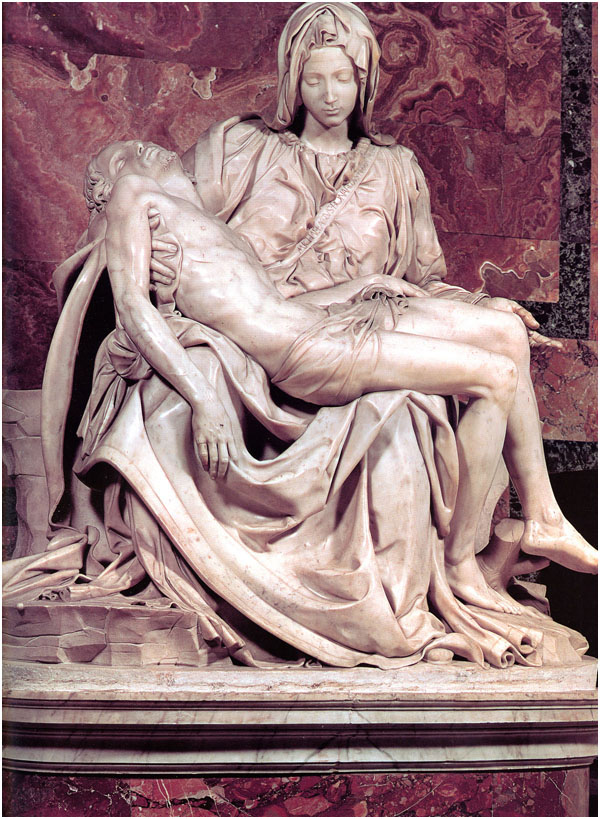
Our Lady of Piety

Our Lady of Piety (Latin: Beata Maria Virgo Perdolens), the Sorrowful Mother or Mother of Sorrows (Latin: Mater Dolorosa), and, Our Lady of the Seven Sorrows or Our Lady of the Seven Dolours are names by which the Blessed Virgin Mary is referred to in relation to sorrows in her life. As Mater Dolorosa, it is also a key subject for Marian art in the Catholic Church.
The Seven Sorrows of Mary are a popular Roman Catholic devotion. In common religious Catholic imagery, the Blessed Virgin Mary is portrayed in a sorrowful and lacrimating affect, with seven daggers piercing her heart, often bleeding. Devotional prayers that consist of meditation began to elaborate on her Seven Sorrows based on the prophecy of Simeon. Common examples of piety under this title are Servite rosary, or the Chaplet of the Seven Sorrows of Our Lady and the Seven Joys of Mary and more recently, “Sorrowful and Immaculate Heart of Mary“.
The feast of Our Lady of Piety is liturgically celebrated each 15 of September or in the month of October in some cases.
The Seven Sorrows (or Dolors) are events in the life Our Lady of Piety that are a popular devotion and are frequently depicted in art.
It is a common devotion for Catholics to say daily one Our Father and seven Hail Marys for each.
These Seven Sorrows should not be confused with the five Sorrowful Mysteries of the Rosary.
The feast of the Our Lady of Piety was originated by a provincial synod of Cologne in 1423 as a response to the iconoclast Hussites. It was designated for the Friday after the third Sunday after Easter. It had the title: Commemoratio angustiae et doloris B. Mariae V.. Before the 16th century, the feast was celebrated only in parts of northern Europe.
Earlier, in 1233, seven youths in Tuscany founded the Servite Order (also known as the “Servite Friars”, or the “Order of the Servants of Mary”). Five years later, they took up the sorrows of Mary, standing under the Cross, as the principal devotion of their order.
Over the centuries several devotions, and even orders, arose around meditation on Mary’s Sorrows in particular. The Servites developed the two most common devotions to Our Lady’s Sorrows, namely the Rosary of the Seven Sorrows and the Black Scapular of the Seven Dolours of Mary. The Black Scapular is a symbol of the Confraternity of Our Lady of Sorrows, which is associated with the Servite Order.[3] Most devotional scapulars have requirements regarding ornamentation or design. The devotion of the Black Scapular requires only that it be made of black woollen cloth.[4]